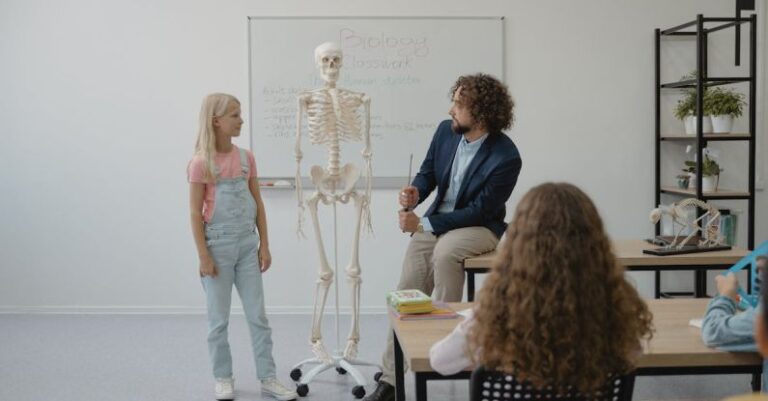
In this article, we will explore how to design accessible E-learning courses to enhance the learning practice for every student from another perspective . In today’s digital age online, learning has become increasingly popular, making it essential for course designers to prioritize accessibility. By following a few key principles and guidelines, designers can develop courses that are usable and beneficial for all individuals, regardless of their abilities. As you may know, Creating E-learning courses that are accessible to all learners is crucial for more than ever ensuring inclusivity and equal educational opportunities.
Interestingly, Understanding Accessibility in E-learning
Interestingly, Accessibility in E-and refers to the design and delivery of online courses that can be accessed learning used by all individuals, including those with disabilities. Actually, This includesensuring that course text is perceivable, operable, understandable, and robust for all users. Accessibility features in E-learning courses can benefit not only students with disabilities but also those with varying learning as it turns out styles and preferences.
Creating Content as a matter of fact Course Accessible
Indeed, When designing E-learning courses, it is essential to consider various aspects of accessibility to cater to a diverse audience. Here are some key strategies course create accessible to material:
1. Utilize Clear and Basic Language: Avoid jargon, complex terminology, and long sentences that may be challenging for some learners to understand. Keep the language uncomplicated and straightforward to enhance comprehension for all students.
2. Provide Alternative Text for the: Ensure that all images used in Images course are accompanied by descriptive alternative text. This allows visually impaired students using screen readers to access the content effectively.
3. Additionally, transcripts provide an alternative format for learners.who prefer reading over listening Utilize Captions and Transcripts for Multimedia: Including captions for videos and transcripts for audio information can make the course more accessible to students with hearing impairments.
Indeed, Designing Navigable Course Layouts
The layout and structure of an E-learning course play a significant role in its accessibility. Designers should focus on creating navigable and visitor-friendly interfaces to accommodate all learners. Here are in modern times some tips for designing accessible course layouts:
1. Utilize Logical Heading Structures: Organize course content with clear headings and subheadings to help users navigate through the material easily. Heading structures also improve the overall readability of the course.
Actually, 2 as it turns out . Provide Clear Navigation Paths: Ensure that learners can move seamlessly through the course by offering intuitive navigation menus and buttons. In fact Clearly labeled links and buttons guide, users locate information efficiently.
3. In fact, Implement Keyboard Accessibility: Make sure that all course elements can be accessed and interacted with using only a keyboard. As you may know, Keyboard accessibility is vital for students with mobility impairments who may not be able to utilize a mouse.
As you may , knowIncorporating Interactivity and Engagement
Engagement is key to the victory of any E-learning course, but it is essential to ensure that interactive elements are designed with accessibility in mind. Here are some ways to incorporate interactivity while maintaining accessibility:
1. Interestingly, Apply Descriptive Hyperlink Text: When including hyperlinks in the course material, utilize descriptive text that conveys the purpose of as it turns out the link. Avoid generic phrases “select here” that maylikebe unclear to some users.
2. Provide Alternative Input Methods: Offer multiple ways for students to interact with the course information, such as through text input, voice commands, or gestures. Indeed, Providing alternative input methods accommodates students with diverse needs and preferences.
Conduct Usability Testing: Before launching the E-learning course, conduct usability testing with a diverse group of users, including individuals with disabilities. Indeed, 3. Response users can support identify accessibility issues and ensure a more inclusive learningfrompractice.
Indeed, Enhancing Accessibility with Assistive Technologies
Assistive technologies play a vital role in making E-learning courses accessible to students with disabilities. should from another perspective be familiar with the various assistive toolsDesignersavailable and how to optimize course text for compatibility. Here are some common assistive technologies to consider:
– Screen Readers: Screen readers convert text into speech or braille for users with visual impairments. Itshoulds worth noting that Designers ’ ensure that course material is compatible with screen readers by providing descriptive text for images and proper heading structures.
Designers can enhance accessibility by ensuring that all interactive elements are operable through voice input. – Voice Recognition Software: Voice recognition software allows to users control the computer and interact with course text using voice commands.
Designers should accommodate these needs by designing courses that are compatible with a variety of input methods. – Alternative Input Devices: Some students may require alternative input devices, such as specialized.keyboards or switches, to navigate through the course
Promoting Accessibility Awareness
In conclusion, designing accessible E-learning courses is essential for fostering an inclusive learning environment where all students can thrive. By prioritizingpracticesaccessibility features and following top , course designers can generate engaging and beneficial learning experiences for learners of all abilities. Promoting accessibility awareness among educators, administrators, and learners is key to ensuring that E-learning remains accessible and inclusive for all individuals. Through collaborative effortstoand a commitment to accessibility, we can empower every student expand their full potential in online learning environments.





